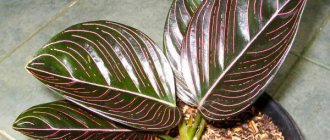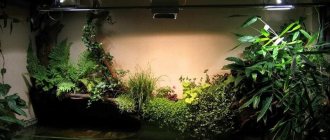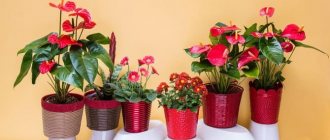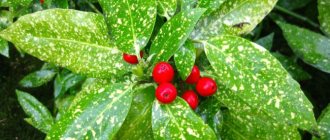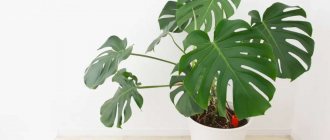Indoor plants make a room more comfortable, lively and bring undeniable benefits. To choose the right indoor flowering plants, you need to have an idea of the basic classification of flowers. This will help you combine the types and varieties of plants that are suitable for your home.
We have compiled a catalog with photographs of the main groups, rules for growing, care and watering, and also answer the question of which plants bloom at home.
The most unpretentious indoor flowers
Abutilon (indoor maple)
Decorative flowering plants, but can also be considered decorative deciduous.
They can bloom all year long if good lighting is provided, but at unusual times they will have less decorative small flowers. They grow quite quickly (up to 50 cm per year), the crown can be cleaned by pruning. To prolong the flowering of hybrid abutilone, you can remove all long shoots.
If you pinch the tops, the bush will be more luxuriant.
Asklepis
Asclepis kurassava, a subshrub up to 80 cm high, is usually grown in rooms.
The stems are densely covered with lanceolate dark green leaves with raised concave veins; the flower with orange flowers collected in corymbose inflorescences at the tops of the stem does not bloom in winter.
Moderate watering, good lighting, optimal feeding and a beautiful flower will thank you.
Valotta
They have an elongated ovoid bulb, with reddish, brown covering scales near the neck.
Linear dark green leaves, up to 50 cm long, somewhat more elegant and thinner than those of amaryllis.
Peduncles up to 30 cm high, dense.
An inflorescence is an umbrella that can contain from 2 to 8 flowers. The flowers are bell-shaped, purple or red.
Valottas love abundant watering, bright lighting, and fertilizing from March to September with mullein solution.
Spathiphyllum
Belongs to the Araceae family. Origin: East Asia and South America.
Recognizable by its characteristic large white flowers. They have a glossy surface, like the leaves.
Blooms from spring to autumn. Loves high humidity, warmth, but without bright sunlight. You need to spray the leaves. Tree bark, coal and brick chips are added to the soil.
Under bad conditions the plant does not die. Instead, flowering deteriorates. A seedling is obtained by separating its part with roots from the main bush.
Climbing indoor flowers
Allamanda
An evergreen climbing shrub with lanceolate, pointed ends, bright green leaves.
The inflorescence is a loose apical raceme; the flowers are large, up to 7 cm in diameter, widely bell-shaped, golden yellow. Blooms from May to September. Requires abundant watering, regular spraying and bright, diffused lighting.
Pruning is necessary to form the crown.
Tradescantia
Not a very tall herbaceous perennial plant.
Depending on the type, the leaf blades can be elliptical, lanceolate or ovoid in shape. To make the bush more branchy, it needs to be pinched regularly. Flowers are blue or purple.
Tradescantia is also used to decorate aquariums.
Prefers bright, diffused light, moderate watering in summer, and low watering in winter.
Transplantation is carried out together with pruning.
Hoya
Due to its large size, it is suitable for spacious rooms.
Thanks to its fleshy leaves with a wax-like coating, hoya is also called “wax ivy.” It grows up to 3 m long, umbellate inflorescences consist of flowers similar to a 5-pointed star, in the center of which a five-membered crown rises.
During the flowering period, a lot of nectar is formed, and the rich aroma is simply impossible to pass by.
While the young plant is growing, it requires watering, bright lighting and phosphorus-containing fertilizers.
During the flowering period, it is not recommended to move from place to place - this can stop the flowering process.
Koleriya
Belongs to the Gesneriev family. Homeland of origin: South America.
An exotic plant. Characteristic are elongated, bell-shaped flowers covered with fibers. Common colors: red, orange and pink. The flowers are not monochromatic, they have inclusions of a different color. The plant blooms in summer and autumn.
Koleria needs high humidity, moderate temperature and watering. It is not recommended to spray the leaves with water, as this can ruin their appearance. Instead, you can spray water around the plant. The flower needs to be provided with a lot of light, but without bright sunlight.
The soil should consist of a mixture of sand and peat. In the summer, it needs to be fed with liquid fertilizers, which are used for orchids.
To create new plants, the following are used: dividing rhizomes, leaves, cuttings, and seeds.
Drought-resistant indoor flowers
Kalanchoe
Houseplants, which are accessible to everyone, do not require special care, but I am pleased with their abundant flowering.
It has a thick fleshy stem, waxy dark green leaves, and a thyroid inflorescence at the top of the stem. Watering should be done after the soil in the pot has dried, it is not afraid of dry air, and prefers good lighting.
It blooms mainly in winter, after which the dry inflorescences are removed.
Spathiphyllum
An indoor plant with white, sail-like flowers located on a high shoot of the inflorescence.
Its main advantage is easy care, natural air purification. Spathiphyllum is also called “female happiness.” It is resistant to drought, but does not tolerate drafts and direct sunlight.
It blooms from March to September, under favorable conditions even in winter; after drying, the shoot should be cut off at the base.
Crassula
Crassula or “money tree” is found in almost every home, but its flowering is very rare.
Crassula consists of a rough woody trunk, oval fleshy leaves resembling coins, small white flowers similar to stars. To achieve flowering, you need minimal care, regular ventilation, bright lighting, average air temperature, moderate watering.
If you overwater a money tree, it may begin to rot.
Fuchsia
In the photo - ampelous fuchsia
The delicate beauty of fuchsia flowers, hanging in luxurious clusters and looking like bells, is touching. For rapid growth and abundant flowering, you need to observe the temperature regime, and do not neglect frequent watering and spraying of the leaves during the hot season. In winter, the need for hydration is reduced. Fuchsia needs a diffused lacy shadow. At the same time, when there is insufficient light, the stems elongate. To prevent this from happening, pinch the tops from time to time. It requires little maintenance, but there is so much beauty in these lilac, pinkish, violet inflorescences! There are varieties with two and three-color petals.
Indoor flowers that bloom all year round
Geranium
A popular house flower, probably just because it blooms all year round.
It grows up to 60 cm, the leaves are palmate-lobed and covered with hairs. Large flowers of 5 correctly placed flowers are collected in inflorescences.
Unlike the variety, there may be:
- smooth, terry;
- variegated;
- pinkish.
Loves moisture and frequent watering, bright light, and is not afraid of even direct sunlight.
To form a beautiful bush, you can trim new shoots.
Balsam
In houses you can see these flowers in pots or in the garden.
The majority of varieties do not require much effort in care, despite this beautiful flower pleases the eye all year round. It has multi-colored flowers, heart-shaped leaves with a serrated edge. It feels more comfortable in conditions of moderate humidity and average air temperature. Sudden temperature changes, too bright lighting or a dark corner can cause harm.
Replanting can be done once every 2 years, or when the stems have stretched and lost their beautiful shape.
Begonia
There are about 900 species of begonia.
Depending on the variety, the leaves can be glossy or double, the flowers can be of various shades.
Home begonia is unpretentious and does not require much attention in care.
It is moisture-loving, it is better to use settled water. Varieties that bloom all year long prefer indirect light. Replanting is carried out if the pot becomes crowded, approximately once every 2-3 years.
Planting is carried out with seeds, tubers, cuttings.
Begonia
Belongs to the Begoniev family, which has many species. Homeland of origin: South America.
Asymmetrical leaves with a beautiful white-green or dark green color. Its small buds can be of different colors.
Good care promotes flowering all year round. Loves plenty of light, but in bright sun the leaves and flowers fade. Unpretentious to temperature. There should be optimal humidity around the flowers. Excessive moisture can cause the death of the plant.
New side shoots are pruned to maintain a beautiful shape. To get a young plant, you need to put the cut stem in water so that it develops roots. The best soil option is a mixture of sand, leaf soil, peat and black soil.
Sun-loving, beautifully flowering indoor plants
Aerides
They include more than 2 dozen varieties, but only a small number are suitable for growing at home.
They have pale green leathery leaves, a beautiful flower 10-15 cm in height. They do well in warm, humid environments.
For an orchid to live comfortably in the ground, a special substrate is needed.
They prefer a large amount of light, tolerate temperatures up to +15 degrees, but the difference between day and night should be no more than 3-4 degrees.
Hyacinths
A beautiful bulbous home flower, it can be short or quite tall.
From the rosette of leaves emerges a thick peduncle with numerous flowers collected in an inflorescence that resembles bells. Loves plenty of sunlight at least 15 hours a day, needs careful but regular watering with settled water.
Afraid of drafts, hot radiators, temperature changes.
Hibiscus
The famous hibiscus tea is made from hibiscus flowers.
The plant reaches a height of up to 80 cm, flowers up to 4 cm in diameter in a rich scarlet hue.
Hibiscus requires proper care, which cannot be called simple.
Excessive watering, sharp fluctuations in air temperature, poor lighting can lead to the dropping of buds and even death.
Young individuals are transplanted annually, adults - as needed.
Shade-tolerant flowering indoor plants
Phalaenopsis orchid
A herbaceous plant with simple, alternate leaves.
Orchid roots perform many vital functions. Flowers can form a simple spike, or a raceme with several flowers on stalks. Can bloom at any time for up to 6 months, requires partial shade, watering when the substrate is completely dry, optimal air temperature from 15 to 25 degrees.
Replanting can be done when the orchid is not blooming.
Poinsettia
House flowering plants are attractive with bright, decorative white or red leaves rather than small white flowers.
But you need to be careful of too much light, as this can cause burns.
To stimulate flowering, poinsettia can be placed in a poorly lit room. Also, do not forget about regular watering, air temperature from 18 to 25 degrees.
Anthurium
The main feature of anthurium is large, hard, glossy leaves and bright flowers that look like sails.
They come in white, pink, or red. Although anthurium belongs to shade-tolerant plants, it still needs diffused light, without it it will not grow well.
It is worth making sure that there are no drafts, and during the heating period, place it away from the hot radiator.
Succulent houseplants
Titanopsis
The genus Titanopsis includes 10 perennial succulent plants.
These are thick, fleshy leaves up to an inch long, collected in a basal rosette.
The edge of the leaf is covered with rounded tubercles of a light shade.
Leaves can be silver, blue, brown, and purple. The flowers are yellow with many long petals. It tolerates heat well, except that it is afraid of overwatering.
Apthenia
An evergreen succulent with fleshy, thick leaves opposite each other.
They have smooth edges, a wedge-shaped shape, and a bright green color. Small round red flowers grow at the ends of the shoots and in the axils. When flowering ends, a seed pod is formed.
Aptenia does not tolerate frost and stops growing at a temperature of +7.
Echeveria
Echeveria is popularly called “stone rose”.
All types of this succulent have fleshy silvery leaves that are located on a rose-shaped stem.
They do not require complex care and tolerate drought well.
Chinese rose
Hibiscus Gabriel
The correct name is hibiscus. A magnificent beauty with large, fiery red, satin white or sunny orange inflorescences. The buds open one after another, live only one day, dry out, and new petals immediately bloom in their place. It gives the impression of constant flowering. Among indoor plants that bloom all year round, hibiscus is one of the most spectacular. In the summer season it is watered in the morning and evening. The plant is light-loving, grows quickly and needs space. To give shape and slow down growth, the tops are periodically trimmed.
